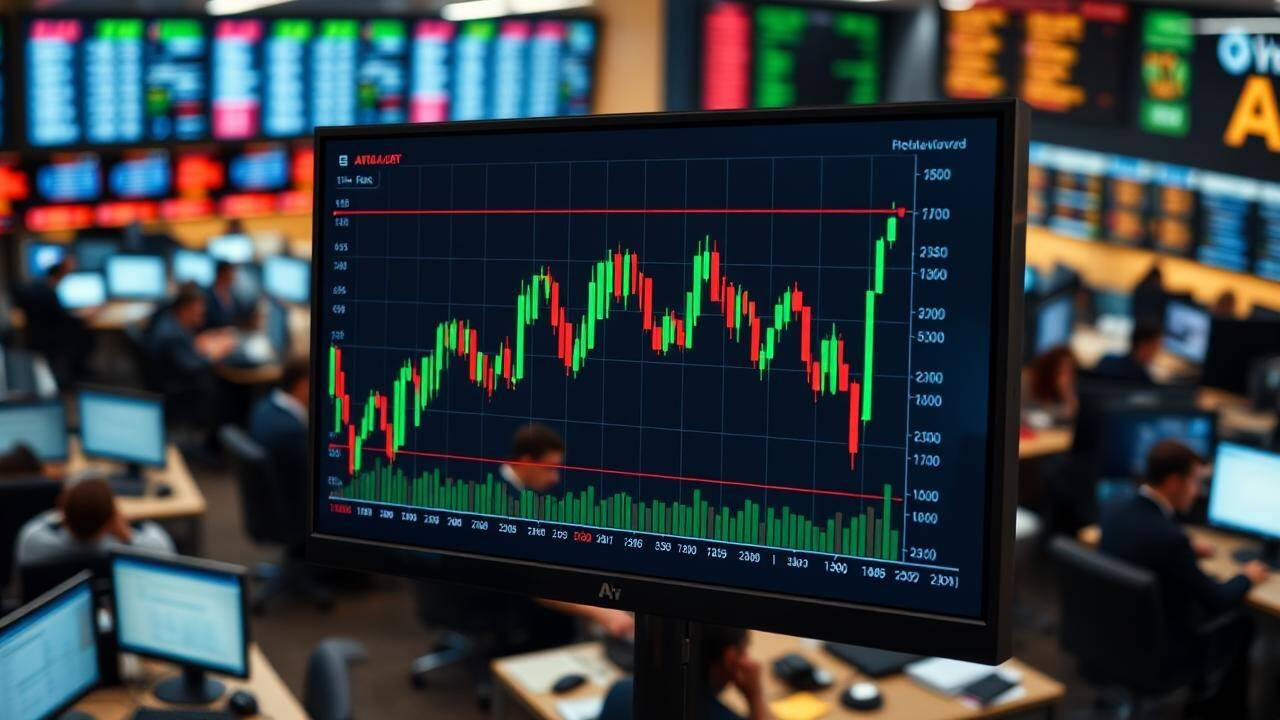Asian stocks surged on Monday, fueled by optimism surrounding US-China trade talks in London and robust US jobs data. Despite a contraction in Japan’s economy and slowing export growth in China, markets in Tokyo, Seoul, and Hong Kong experienced gains. Wall Street also saw a rally, with the S&P 500 approaching its all-time high.
Can We Finally Exhale? Asian Markets Pop as Trade Winds Shift
Okay, let’s be honest, navigating the global economy these days feels a bit like walking a tightrope blindfolded. One wrong step and…splat. But today, there’s a little less wobble. Asian markets are flashing some serious green, and for the first time in a while, it feels like we might actually be allowed to hope a little.
What’s causing this sudden burst of sunshine? Primarily, it seems to be a combination of factors, chief among them renewed optimism around the ever-complex U.S.-China trade relationship. For years, this has been the economic equivalent of a marital spat played out on the world stage, and we’ve all been forced to listen to the shouting. Now, whispers of progress are circulating.
The article points to “trade talks” sparking this wave of positive sentiment. That’s a deliberately vague statement, but what it hints at is significant. No one’s divulging the nitty-gritty just yet – this is trade negotiation, after all, where secrets are power – but the mere fact that discussions are happening, and apparently heading in a constructive direction, is enough to inject some much-needed adrenaline into the markets.
Hong Kong’s Hang Seng index, for example, saw a significant jump, leading the charge. That’s not insignificant. Hong Kong often acts as a bellwether for the broader Asian economic outlook, so its enthusiasm is definitely something to take Here’s why that matters. The U.S. is still the engine that drives a significant portion of global economic activity. If the U.S. economy tanks, everyone feels the ripple effects. A healthy U.S. labor market signals continued consumer spending and overall economic health, which, in turn, translates to increased demand for goods and services from Asia and elsewhere.
So, it’s a double-whammy of good news: potential de-escalation in trade tensions coupled with unexpectedly strong U.S. economic data. It’s like the sun peeking through the clouds after a long storm.
However (and there’s always a ‘however,’ isn’t there?), let’s not get carried away just yet. We’ve been burned before. Remember all those times we thought we were finally turning a corner, only to be smacked back down by new tariffs, geopolitical tensions, or surprise inflation figures? Yeah, me too.
The U.S.-China relationship, for all the talk of progress, remains incredibly complex. Deep-seated disagreements on issues like technology, intellectual property, and human rights aren’t going to disappear overnight. These are long-term challenges that will continue to exert pressure on the global economy.
Furthermore, while the U.S. jobs data was encouraging, inflation remains a persistent threat. Central banks around the world are still grappling with how to tame rising prices without triggering a recession. The balancing act is incredibly delicate.
So, where does this leave us? Cautiously optimistic, I’d say. It’s good to see some positive momentum in the markets, and the potential for improved U.S.-China relations is undoubtedly a welcome development. But we need to remember that the global economy is still navigating turbulent waters.
The key takeaway is this: keep a close eye on developments. Don’t get swept away by the initial wave of enthusiasm. Monitor the actual progress of U.S.-China trade talks, pay attention to inflation data, and be prepared for potential volatility.
This could be the start of a genuine recovery, or it could be a temporary blip on the radar. Only time will truly tell. But for today, at least, it feels a little bit easier to breathe. And that’s worth something, right? Maybe even enough to loosen that blindfold just a little.
📬 Stay informed — follow us for more insightful updates!







